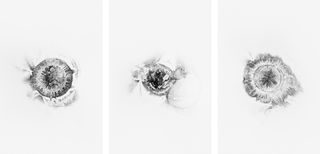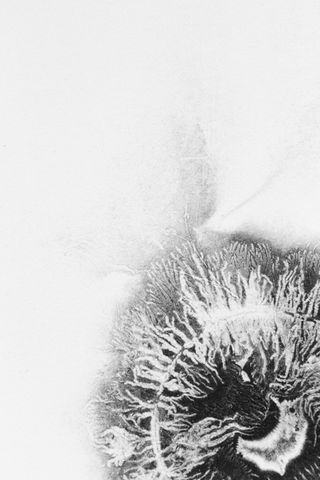Printing with 400,000 volts reveals the beauty of electrical fields
Graphic designer Luke Evans strips the Xerographic process back to its basics in this abstract project Xero.

Luke Evans, a final year graphic design and photography student at Kingston University, is behind this beautiful new series of abstract prints, titled Xero.
"In Xero, I print with electricity to reveal electrical fields – using toner powder and over 400,000 volts," he says. "I become a human Xerox printer, stripping back the Xerographic process to its basics." We spoke to him to find out more about the project was made.
Where did the idea come from and how did it develop?
I always thought I'd be a scientist. In fact, before I came to study photography I was going to do physics. The starting point for Xero came when I was researching types of energy in books from the 1700s, and quickly became fascinated with the early experimentations with electricity.
We've come a long way since then, so I looked for ways to show electricity in its raw state. I thought about the Xerox printer which uses static electricity to print images, and then tried to deconstruct the process to make the image the electricity itself.
Please talk through the creative process behind the project
I found that the field is mainly affected by the shape of the electrode, voltage, and polarity that I use, but after that it's randomly generated. It was a complete case of trial and error.
Because of that, there was a huge editing process involved, sorting through hundreds of shapes to the final selection of circles and lines that had a cellular, organic feel. I then started working on oversized prints using five meters of acrylic and large rolls of paper to test how far I could push the method.

What was the biggest challenge, and how did you overcome it?
The most difficult part was battling with the weather! If it's raining, I can't get an image. The Van Der Graaf that I use as a source of static is extremely sensitive to the humidity levels in the air. There was a period throughout the spring where I couldn't work on it for a month. I tried using a dehumidifier, but because I was in a studio and not a lab, the only thing I could do was wait for the right conditions.
What's your favourite aspect of the project?
The fact that I never have an idea of what the field will look like. Everything is totally invisible up to the point that I apply the toner powder onto the acrylic. The moment it appears always feels like magic; it always astounds me just how much minute detail there is in each field.

Thank you for reading 5 articles this month* Join now for unlimited access
Enjoy your first month for just £1 / $1 / €1
*Read 5 free articles per month without a subscription

Join now for unlimited access
Try first month for just £1 / $1 / €1
Get the Creative Bloq Newsletter
Daily design news, reviews, how-tos and more, as picked by the editors.

Kerrie Hughes is a frequent contributor to Creative Bloq, and was once its editor. One of the original CB crew, Kerrie joined the team back in 2013 after moving from her role as staff writer on 3D World. Since then she's written regularly for other creative publications such as ImagineFX, Computer Arts and Digital Camera World. After a stint working for the police, Kerrie is back reviewing creative tech for creative professionals.